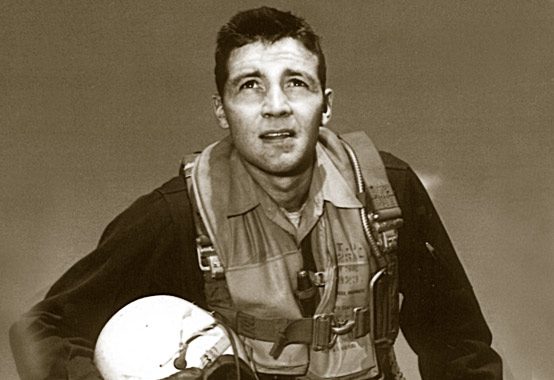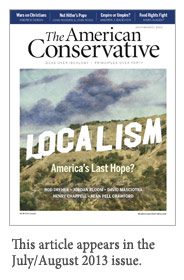John Boyd’s Art of War

Off and on for about 20 years, I had the honor of working with the greatest military theorist America ever produced, Col. John Boyd, USAF. As a junior officer, Boyd developed the energy-management tactics now used by every fighter pilot in the world. Later, he influenced the designs of the F-15 and F-16, saving the former from becoming the turkey we are now buying in the F-35 and making the latter the best fighter aircraft on the planet. His magnum opus, a 12-hour briefing titled “Patterns of Conflict,” remains a vast mine of military wisdom, one unlikely to be exhausted in this century.
Boyd is best known for coming up with the OODA Loop or Boyd Cycle. He posited that all conflict is composed of repeated, time-competitive cycles of observing, orienting, deciding, and acting. The most important element is orientation: whoever can orient more quickly to a rapidly changing situation acquires a decisive advantage because his slower opponent’s actions are too late and therefore irrelevant—as he desperately seeks convergence, he gets ever increasing divergence. At some point, he realizes he can do nothing that works. That usually leads him either to panic or to give up, often while still physically largely intact.
The OODA Loop explains how and why Third Generation maneuver warfare, such as the German Blitzkrieg method, works. It describes exactly what happened to the French in 1940, when Germany defeated what was considered the strongest army on earth in six weeks with only about 27,000 German dead, trifling casualties by World War I standards. The French actually had more and better tanks than the Germans.
It is also a partial explanation for our repeated defeats by Fourth Generation non-state entities. Our many layers of headquarters, large staffs, and centralized decision-making give us a slow OODA Loop compared to opponents whose small size and decentralized command enable a fast one. A Marine officer stationed with our counter-drug traffic effort in Bolivia told me the traffickers went through the Loop 12 times in the time it took us to go through it once. I mentioned that to Colonel Boyd, and he replied, “Then we’re not even in the game.”
Another of Boyd’s contributions to military theory explains more of our failure in recent conflicts. To the traditional levels of war—tactical, operational, and strategic—Boyd added three new ones: physical, mental, and moral. It is useful to think of these as forming a nine-box grid, with tactical, operational, and strategic on one axis and physical, mental, and moral on the other. Our armed forces focus on the single box defined by tactical and physical, where we are vastly superior. But non-state forces focus on the strategic and the moral, where they are often stronger, in part because they represent David confronting Goliath. In war, a higher level trumps a lower, so our repeated victories at the tactical, physical level are negated by our enemies’ successes on the strategic and moral levels, and we lose.
Boyd had a reservoir of comments he repeated regularly, one of which was, “A lot of people in Washington talk about strategy. Most of them can spell the word, but that’s all they know of it.” The establishment’s insistence on an offensive grand strategy, where we attempt to force secular liberal democracy down the throats of every people on earth, is a major reason for our involvement and defeat in Fourth Generation conflicts. A defensive grand strategy, which is what this country followed successfully through most of its history, would permit us to fold our enemies back on themselves, something Boyd recommended. With us out of the picture, their internal fissures, such as those between Sunni and Shiites in the Islamic world, would become their focus. But as usual, Boyd was right: virtually no one in Washington can understand the advantages of a defensive grand strategy.
Being involved in every conflict on earth is useful if the real game is boosting the Pentagon’s budget rather than serving our national interests. Here too Boyd had a favorite line. He often said, “It is not true the Pentagon has no strategy. It has a strategy, and once you understand what that strategy is, everything the Pentagon does makes sense. The strategy is, don’t interrupt the money flow, add to it.”
 Perhaps Boyd’s most frequently uttered warning was, “All closed systems collapse.” Both our military and our policy-making civilian elite live in closed systems. Because Second Generation war reduces everything to putting firepower on targets, when we fail against Fourth Generation opponents, the military’s only answer is to put more firepower on more targets. Ideas about other ways of waging war are ignored because they do not fit the closed Second Generation paradigm. Meanwhile, Washington cannot consider alternatives to our current foreign policy or grand strategy because anyone who proposes one is immediately exiled from the establishment, as was Boyd himself. It says something about our current condition that the greatest military theorist we ever produced retired as a colonel. At John’s funeral in Arlington, which I attended, most of the people in uniform were junior Marine officers. His own service, the Air Force, was barely represented.
Perhaps Boyd’s most frequently uttered warning was, “All closed systems collapse.” Both our military and our policy-making civilian elite live in closed systems. Because Second Generation war reduces everything to putting firepower on targets, when we fail against Fourth Generation opponents, the military’s only answer is to put more firepower on more targets. Ideas about other ways of waging war are ignored because they do not fit the closed Second Generation paradigm. Meanwhile, Washington cannot consider alternatives to our current foreign policy or grand strategy because anyone who proposes one is immediately exiled from the establishment, as was Boyd himself. It says something about our current condition that the greatest military theorist we ever produced retired as a colonel. At John’s funeral in Arlington, which I attended, most of the people in uniform were junior Marine officers. His own service, the Air Force, was barely represented.
John’s work was often elegant, but in person he was always the direct, and sometimes crude, fighter pilot. Boyd’s favorite, inelegant phrase for defeating one of his many opponents in the Pentagon was “giving him the whole enchilada right up the poop chute.” That is what history will shortly give this country if we continue to allow closed systems to lead us. Boyd’s work, which is best summarized in Frans Osinga’s book Science, Strategy and War: The Strategic Theory of John Boyd, could put us on a different course. But learning from Boyd would require open systems in Washington. Perhaps after the establishment collapses, Boyd can help us pick up the pieces.
William S. Lind is author of the Maneuver Warfare Handbook and director of the American Conservative Center for Public Transportation.
Comments